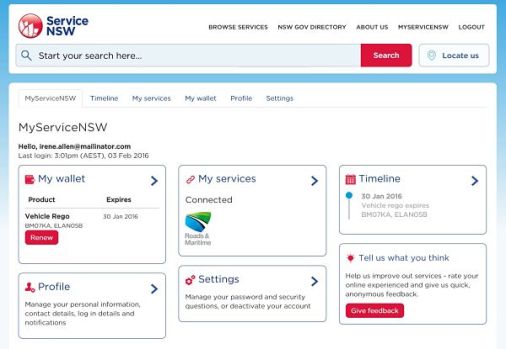
Adobe, the 30-something Sillicon Valley behemoth that dominates the electronic document, publishing and visual design sectors, has mounted a big strategic push to finally eliminate paper from offices around the globe by digitising the last remaining factor that keeps ink on parchment: the humble human signature.
In a global announcement on Tuesday the vendor, whose market capitalization now sits at US$38 billion and wares include the ubiquitous Acrobat document platform, Photoshop and InDesign says it will now integrate free, digitised physically drawn e-signatures into its software.
The big electronic sign-off is part of a much bigger shake-up of Adobe’s document management business which has been renamed Adobe Document Cloud (Adobe DC).
The enduring necessity for governments and corporations to obtain ink-on-paper signatures for forms and applications ranging from applications for mortgages, the dole and passports has remained the single biggest failure point in automating workflows and business process based around documents over the last forty years.
So just as the credit card industry is forcibly phasing out signatures as a biometric marker of acknowledgement and authorization, Adobe is betting heavily that it can just re-invent an individual’s personal mark as mapped pixels, but reinvent a core part of its business at the same time.
The nub of the ink-on paper problem so far has been the difficulty of finding an input device which can not only accurately plot a person’s signature, but also embed their personal scrawl into a document that is open in front of the signatory at the time.
Now Adobe reckons it’s got that problem pretty well licked because so many people already have some sort of touch screen device like a smartphone, tablet or even PC that it’s really now only the software that needs to catch up.
“While most forms of content have successfully made the move to digital (books, movies, music), documents and the process of working with them have not, and that needs to change,” said Bryan Lamkin, Adobe’s senior vice president of technology and corporate development
“Adobe Document Cloud will revolutionise and simplify how people get work done with critical documents.”
Adobe’s novel reinvention of the humble ‘John Hancock’ could potentially provide as much real world utility as it does gimmick factor.
For years the document security and access control industries have struggled conspicuously to deliver unique but utilitarian means of authenticating a person by using devices that range from irritating algorithmic key fobs to intrusive iris and fingerprint scanners. There has been no killer app.
In the event electronic signatures can become checkable against a reference on file, it could – like voice printing — open up a strong new factor to put into the in the constantly shifting mix of identity credentials.
It’s certainly a big market ripe for change.
The convergence of once separate technology channels onto smartphones has proved a difficult challenge for organisations relying on so-called ‘two-factor’ mechanisms to secure access and transactions. For example, banks and other organisations that once sent internet account access codes via SMS messages to mobile phones to separate channels now have to grapple with the fact that most transactions and account access sessions occur from the handset itself.
Stradling devices
While the reinvention of the signature is certainly something to write home about, Adobe’s latest global trumpet blast is really as much about keeping its Acrobat platform embedded in government and enterprise as the default document standard by finally opening up a swag of capabilities.
Paul Robson, Adobe’s Asia Pacific president told Government News the switch to Acrobat DC (as Adobe is calling it) finally aligned the document workflow arm of the company with similar moves for its creative suite (InDesign, Photoshop etc) and its online marketing offering that are all fully on cloud based subscription models.
Mr Robson said the big shift in positioning and capability contained three core elements that complement each other including eSignature play.
One example Adobe is citing is that a paper mail or form recipient will be able to take a photo of a document, convert it to an electronic file that can be digitally edited, fill in the details, sign it, save it, send it and then track its progress as well as who has been taking a look or actioning outcomes.
But the big emphasis Adobe’s pushing to government and corporates is that it’s made its document platform device agnostic so that they open, render and work across smartphones, tablets and mobile and desktops PCs.
“It’s a completely changed interface to mobile, it enables you to . . . edit documents, to create workflows [across any device].
Going with the workflow
The third factor of managing workflows, controlling access and enabling functionality natively across all form factors is clearly what Adobe believes can clinch its longevity in the public sector and big organisations.
But to do that the company will have to both integrate and compete with the likes of Microsoft which initially missed the mobile computing boat when it first sailed and has been playing catch-up to the likes of Apple and Google ever since.
One key question is whether Adobe’s own end-user interface for creating documents from scratch can displace the likes of Microsoft Office (especially Microsoft Word) which has now finally been ported to Apple’s devices after a stint of denial over Cupertino’s market share of screens and eyeballs.
For all of Adobe Acrobat’s previous and new capabilities, a daily ritual for many end users has been to create a document in Word and then save it off in Acrobat as a PDF before it starts moving around.
Robson bristles at any suggestion Adobe is making a land grab for the word processing market through its latest push. He says they’ve been there all along.
“Word processing technology has always existed in Acrobat. You could always edit a document, you could always type one up,” he says.
“This isn’t about Adobe releasing a word processor, this is about Adobe adding significantly more value and services around Acrobat. Once [a document is] a PDF you have some security, some workflow, some efficiency around it.”
That well may be. But after a couple of decades or relative stability in the document, word processing and productivity software markets that feeling that there’s one less chair than there are dancers just won’t seem to go away.
Comment below to have your say on this story.
If you have a news story or tip-off, get in touch at editorial@governmentnews.com.au.
Sign up to the Government News newsletter

